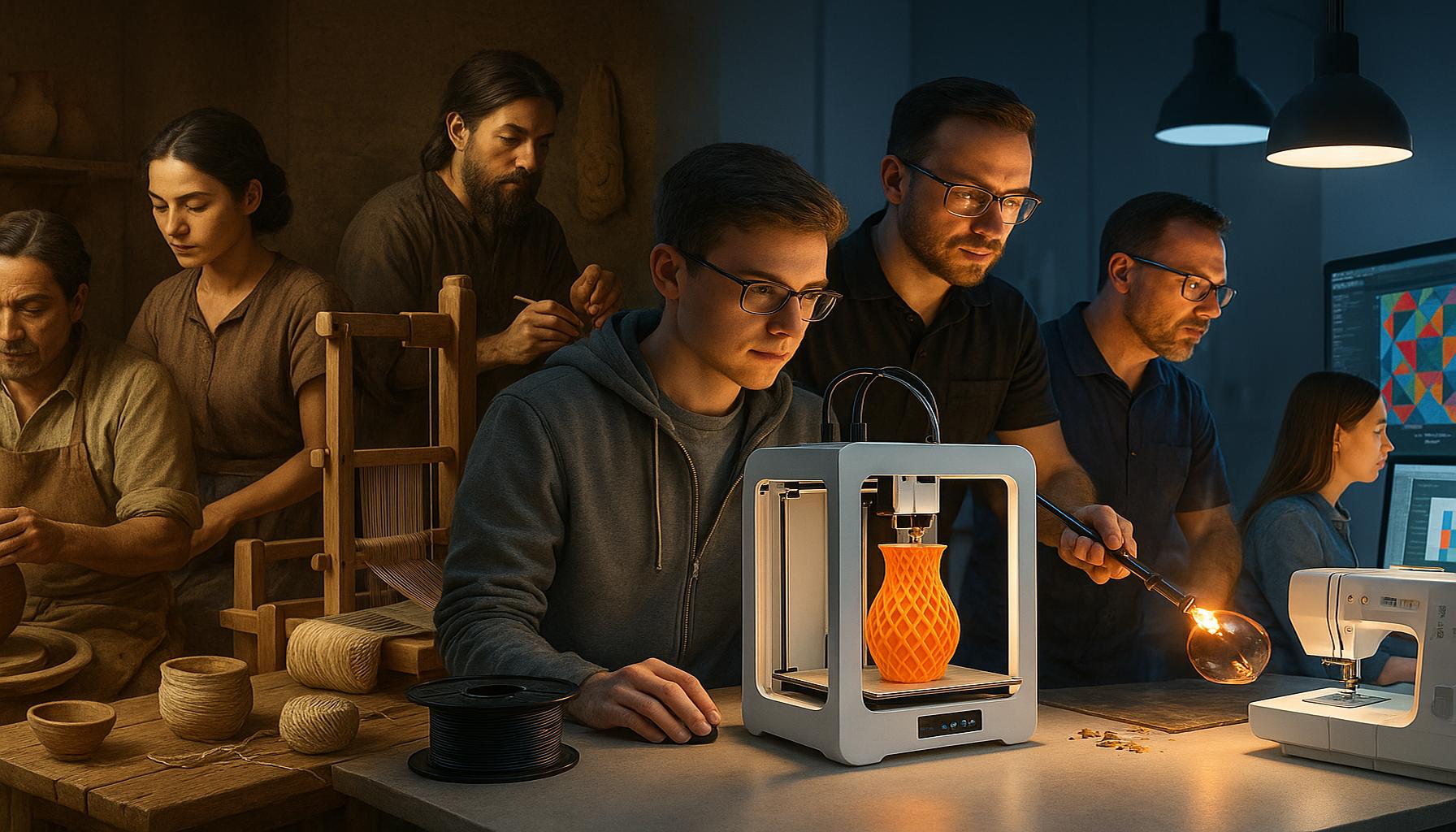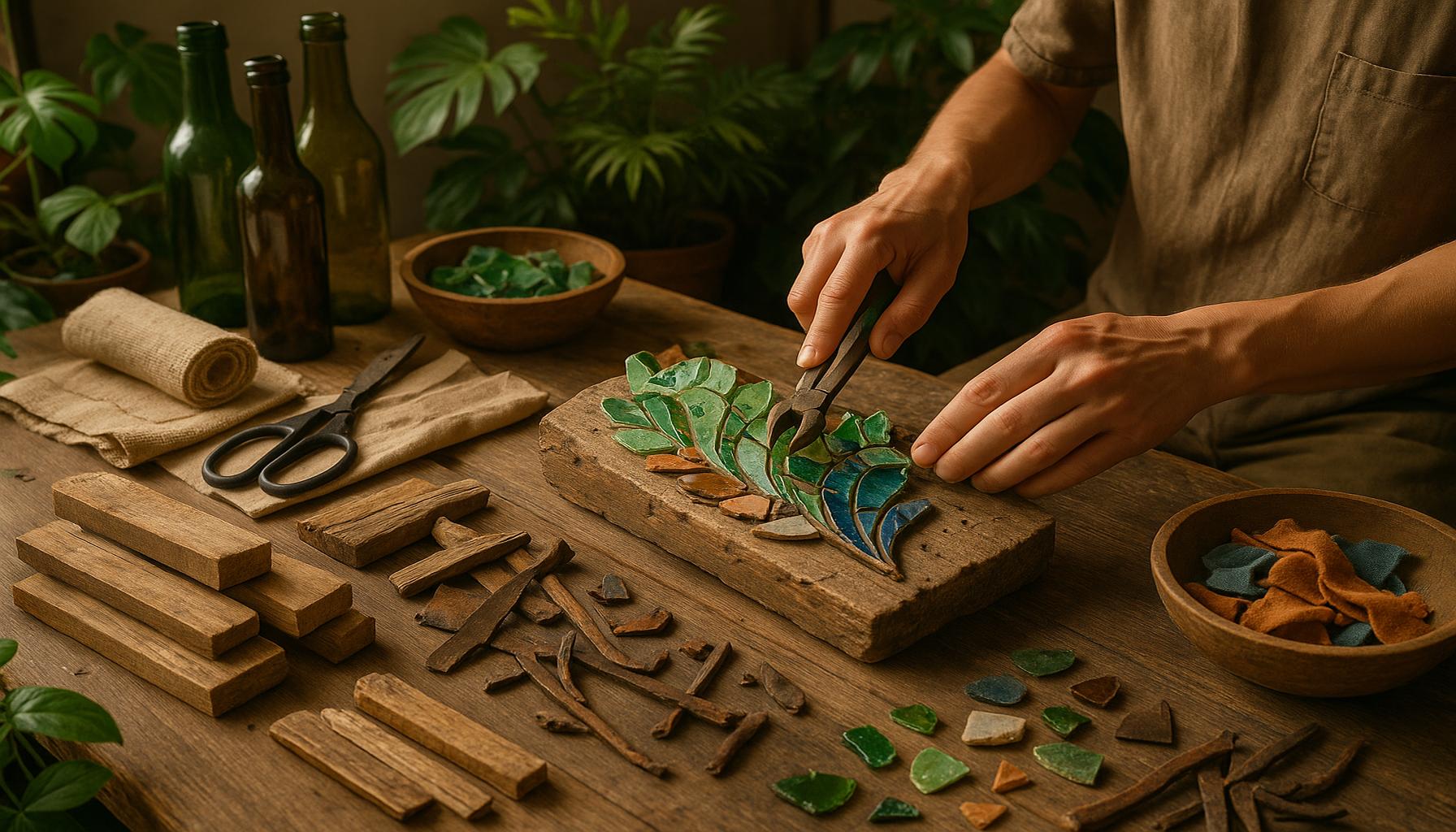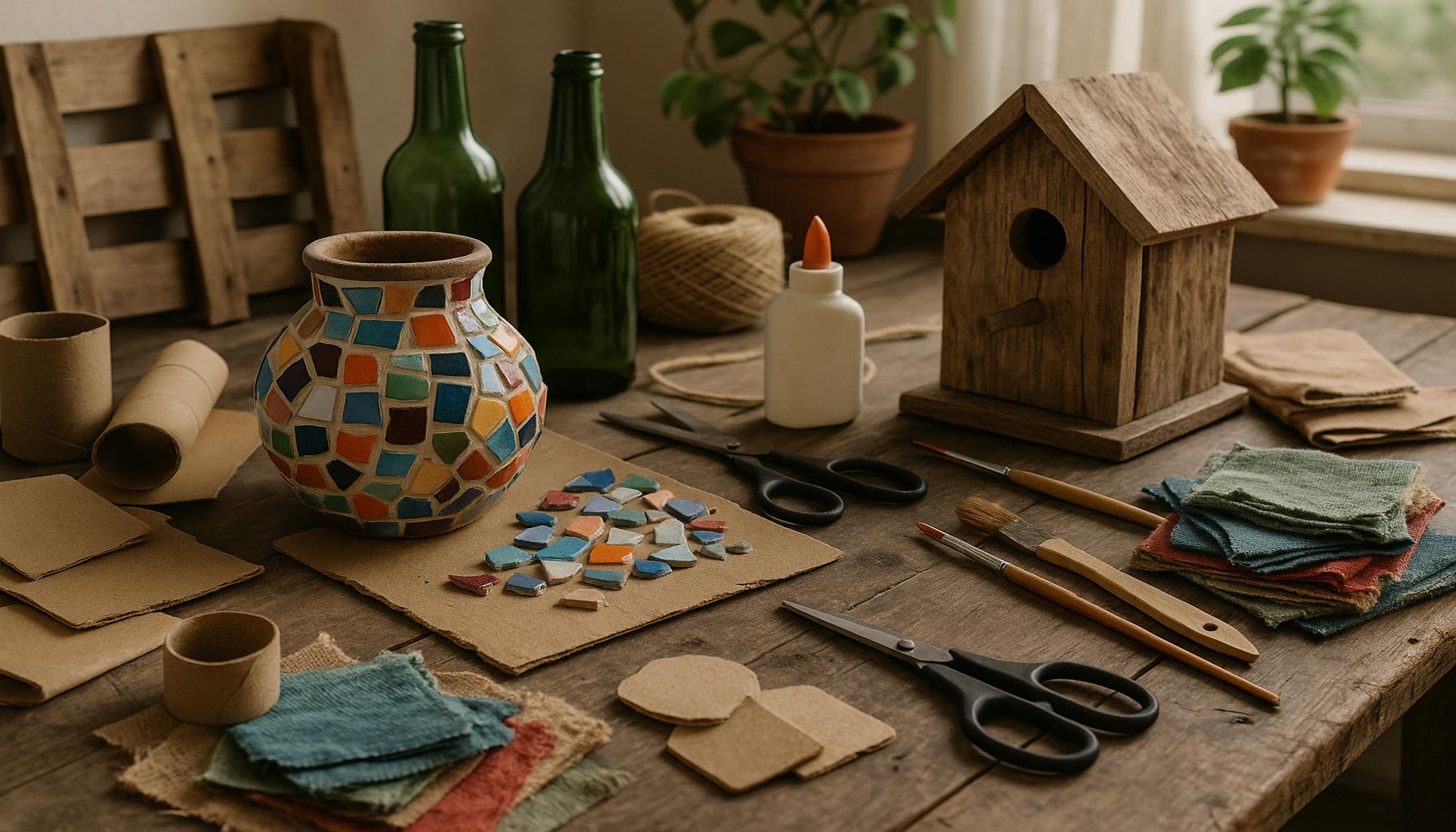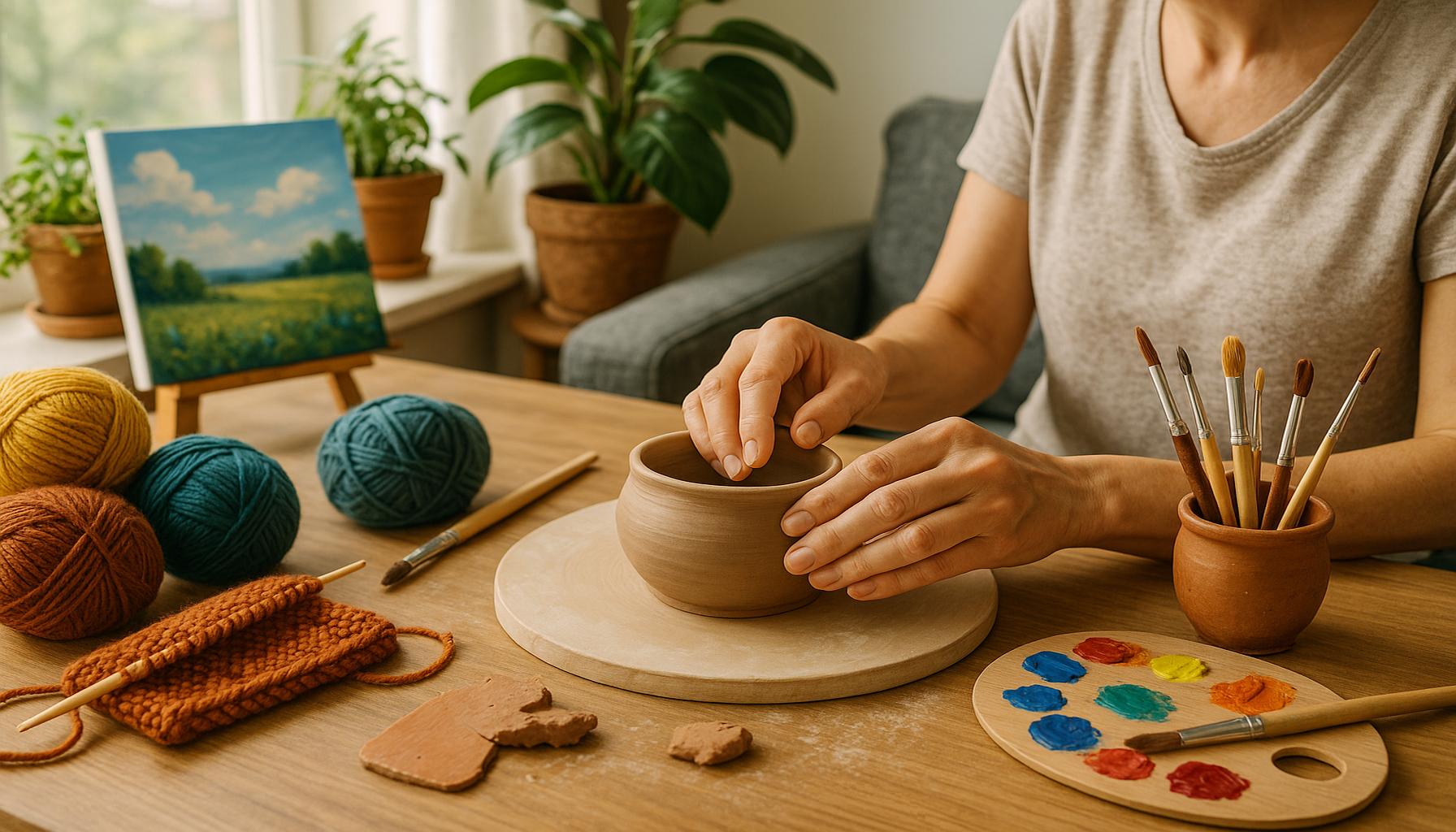The evolution of craft techniques: from traditional to contemporary

Understanding Craft Techniques
The world of craftsmanship offers a rich tapestry woven from diverse techniques that have evolved dramatically over time. From ancient hands shaping clay into pottery to modern artisans employing cutting-edge technologies, this journey through craft techniques reveals not only the skills involved but also the societal and cultural evolution they represent.
Traditional Techniques
Traditional techniques encompass a wide array of practices that have been passed down through generations. These methods tell stories about their origins and purposes, rooted in the needs and values of their communities.
- Hand-weaving and quilting: This technique involves intricately creating textiles using looms or sewing methods. Quilting, particularly in America, often serves community and cultural functions, with many quilts telling personal or historical narratives through patterns and designs.
- Pottery and ceramics: Originating thousands of years ago, pottery techniques range from wheel-throwing to hand-building. In the United States, Native American pottery is particularly noteworthy, showcasing beautiful glazes and forms that reflect cultural traditions.
- Woodworking and carving: Traditional woodworking involves shaping wood into functional or artistic objects. This art can be seen in everything from handcrafted furniture to intricate sculptures, with craftsmanship varying significantly across regions.
Contemporary Approaches
In contrast, contemporary approaches have emerged through innovation and the integration of modern technology, challenging and expanding the definition of traditional craftsmanship.
- Digital fabrication and 3D printing: These techniques have revolutionized how artisans create, allowing for complex design and precise production. For example, artisans can now create customized objects that would be nearly impossible with traditional methods.
- Mixed media and installation art: Artists today often blend multiple materials and techniques to create immersive experiences, shifting the focus from individual craftsmanship to the overall impact of their installations.
- Upcycling and sustainable practices: In response to environmental concerns, many modern artisans are reimagining waste materials into beautiful works of art or functional items. This practice not only highlights creativity but also champions a more sustainable way of producing art and goods.
This evolution from traditional to contemporary techniques prompts critical discussions about the significance of craftsmanship in today’s society. Questions arise, such as how current artisans maintain authenticity while embracing innovation. Are the modern shifts enhancing the craft or risking the loss of valuable traditions?
As we explore these questions, we begin to see how artisans navigate the complexities of change, balancing the respect for their heritage with the excitement of new materials and ideas. The fascinating interplay between past and present in the craft world continues to inspire both creators and communities alike, warranting further exploration and appreciation for the art of craftsmanship.

DISCOVER MORE: Click here to learn about the evolution of digital photography
Transitioning from Tradition to Innovation
The journey of craft techniques reveals a captivating narrative that intertwines with human history and societal shifts. As we delve deeper into the initial phases of this evolution, we uncover the myriad influences that shaped traditional practices into the contemporary crafts we see today.
Historical Significance of Traditional Techniques
Traditional craft techniques not only serve functional purposes but also carry profound cultural significance. Many of these methods reflect the material realities and socioeconomic frameworks of their time. For instance, hand-weaving and quilting are as much about the textile itself as they are about preserving cultural identity. These techniques often utilize locally sourced materials, which foster a connection to the land and history.
- Native American beadwork: This intricate craft represents spiritual and cultural narratives through the use of colorful beads. Beadwork has been an essential part of storytelling and ceremonial life, showcasing a rich lineage that continues to inspire modern artists.
- Shaker furniture: This design approach is characterized by simplicity and functionality, resulting in timeless pieces that embody the Shaker belief system. The craftsmanship reflects a philosophy that values utility and beauty equally, a lesson still relevant today.
- Basket weaving: An age-old tradition among various Indigenous peoples, this technique employs natural materials to create functional and aesthetic pieces. Each basket tells a story, often revealing the cultural practices and ecological understanding of its maker.
Impact of Industrialization and Change
The advent of the Industrial Revolution marked a significant turning point, drastically altering the landscape of craft. The mass production of goods led to a decline in personalized craftsmanship, as mechanized processes took precedence over traditional techniques. However, this shift galvanized movements dedicated to preserving artisanal skills, leading to the Arts and Crafts movement in the late 19th century. Artisans began to champion handmade creations, emphasizing the value of individuality and connection to craftsmanship.
As we moved into the 20th century, further innovations—such as synthetic fibers and modern machinery—expanded the toolkit available to craftsmen. While these advancements posed challenges to authenticity and tradition, they also opened doors to unprecedented creative possibilities. Traditionally rooted artisans began experimenting with mixed materials and new processes, thus paving the way for contemporary practices.
Today, as we embrace both the wisdom of traditional techniques and the promise of innovation, we witness a fascinating synthesis. The dichotomy between tradition and contemporary craft is not merely about preference but reflects broader social dynamics. Are artisans preserving the essence of their crafts, or are they evolving them in response to modern sensibilities?
As this narrative unfolds, it invites us to appreciate the complexity of craftsmanship. Understanding the evolution from traditional to contemporary techniques enriches our appreciation of the lived experiences behind each creation. This ongoing dialogue between past methodologies and future directions continues to shape the landscape of craft, offering valuable insights into our cultural heritage.
| Category | Details |
|---|---|
| Craftsmanship | Connection to cultural heritage and the environment. |
| Innovation | Blending traditional techniques with modern technology creates unique pieces. |
| Sustainability | Emphasis on sustainable practices in contemporary craft, reducing waste. |
| Community | Building connections through workshops, reviving local crafts and enhancing skills. |
The journey from traditional to contemporary craft techniques showcases an incredible evolution driven by creativity, culture, and the need for sustainability. One of the remarkable aspects of this evolution is how craftsmanship plays a pivotal role in maintaining a connection to cultural heritage, allowing artisans to express their identities and histories through their work.Moreover, contemporary artisans are increasingly incorporating innovation into their methods. By merging age-old techniques with modern technologies, the results are often breathtakingly unique creations that tell a story of time and transformation. This fusion invites a reevaluation of the materials and techniques used, ultimately leading to exciting possibilities for design and expression.In addition, the rise of sustainability in the craft sector is increasingly important. Artisans focus on reducing waste and utilizing eco-friendly materials, which resonates with the growing global emphasis on sustainable practices. This integration ensures that crafting not only serves an aesthetic value but also promotes environmental responsibility.Finally, the craft community benefits from actively building connections among artisans and enthusiasts. As workshops flourish, knowledge sharing and skill enhancement become key components in the revival of local crafts, which are often seen as vital to preserving cultural identity in a rapidly changing world.
DIVE DEEPER: Click here to uncover unique music compositions
The Rise of Contemporary Craft Practices
As we navigate through the twists and turns of craftsmanship evolution, the landscape of contemporary craft is characterized by a vibrant interplay between tradition and modernity. This shift not only embraces new materials and innovative techniques but also reflects a broader desire for sustainability, community engagement, and self-expression among artisans.
Revival of Handmade Traditions
In recent years, there has been a discernible resurgence of interest in handmade crafts as consumers increasingly seek authentic connections with their purchases. This movement has breathed new life into longstanding practices, as artisans reintroduce traditional techniques with a fresh perspective. For instance, ceramics—once relegated to historical pottery styles—now feature contemporary aesthetics, with artists like Ben Medansky and Jessica Hans pushing the envelope with unique glazes and modern forms to attract a new generation.
- Hand-dyed textiles: Modern artisans are rediscovering ancient dyeing methods, such as indigo and natural pigments, to create textiles that tell a story through color and texture. Such practices not only preserve heritage but also offer sustainable alternatives to synthetic dyes that are harmful to the environment.
- Woodworking: Contemporary woodworkers often merge traditional joinery techniques with innovative designs, resulting in functional art pieces. Makers like Ashley Ypung blend the old with the new, creating furniture that is not only aesthetically pleasing but also environmentally responsible through the use of reclaimed wood.
The Influence of Technology in Craft
Inevitably, technology has reshaped the techniques of modern artisans, offering tools that expand their creative capacity. Digital fabrication methods, such as 3D printing and laser cutting, allow crafters to bring intricate designs to life with precision and speed. Craftspeople like Shai Faran incorporate these technologies to create stunning jewelry and decorative items that might have been inconceivable through traditional methods alone.
Yet, this embrace of technology does not eliminate the essential human touch. Many contemporary artisans find ways to integrate digital tools with hands-on craftsmanship, creating a harmonious relationship between the two realms. For example, craftspeople can now utilize software to design intricate patterns and then execute them using traditional hand techniques, ensuring the uniqueness of each piece while benefiting from technological advancements.
Community and Collaboration
Today’s craft scene is marked by a strong sense of community and collaboration. Craft fairs, workshops, and online platforms, such as Instagram and Etsy, have become crucial in fostering relationships among artisans and customers, allowing for direct engagement and the sharing of ideas. Collaborations among artists from disparate disciplines lead to cross-pollination of techniques, inspiring novel approaches to craftsmanship.
Moreover, community-oriented projects challenge the conventional artist-audience barrier by inviting participatory experiences. Initiatives such as community weaving projects or collaborative murals not only create beautiful outcomes but also foster a sense of belonging and shared purpose.
Through this dynamic landscape, it becomes increasingly evident that the evolution of craft techniques is far from linear. Rather, it is a mosaic of influences and practices that continue to evolve and adapt, enriching the cultural fabric of our society.
DISCOVER MORE: Click here to dive deeper
Conclusion: Bridging the Past and the Present in Craft
In examining the evolution of craft techniques, we discover a rich tapestry woven from the threads of history and innovation. The journey from traditional to contemporary craftsmanship is not merely a transition but a dialogue—one that continuously redefines the significance of handmade creations in our modern world. The resurgence of interest in handmade traditions signifies a collective yearning for authenticity, where consumers prioritize personal connections with artisans, transforming buying into communal experiences.
Moreover, the integration of technology signifies a pivotal chapter in this narrative. The harmony between age-old techniques and cutting-edge tools has birthed a new era of possibilities, where crafters maintain the intimacy of handwork while embracing efficiency and precision. This duality nurtures both unique artistic expressions and sustainable practices, as seen in the innovative applications of materials such as reclaimed wood and natural dyes.
Additionally, the role of community and collaboration has never been more essential. Craft fairs and digital platforms foster creative exchanges, transforming solitary artisanship into vibrant networks of artistry that inspire fresh perspectives. Projects that encourage participation bridge gaps between artists and audiences, cultivating a shared dedication to creativity and sustainability.
Ultimately, the evolution of craft techniques reminds us that as we advance into the future, we must carry forward the wisdom of the past. It invites artisans and enthusiasts alike to explore, adapt, and innovate, creating a thriving landscape where craftsmanship not only survives but flourishes—an ongoing celebration of human creativity that connects generations.


